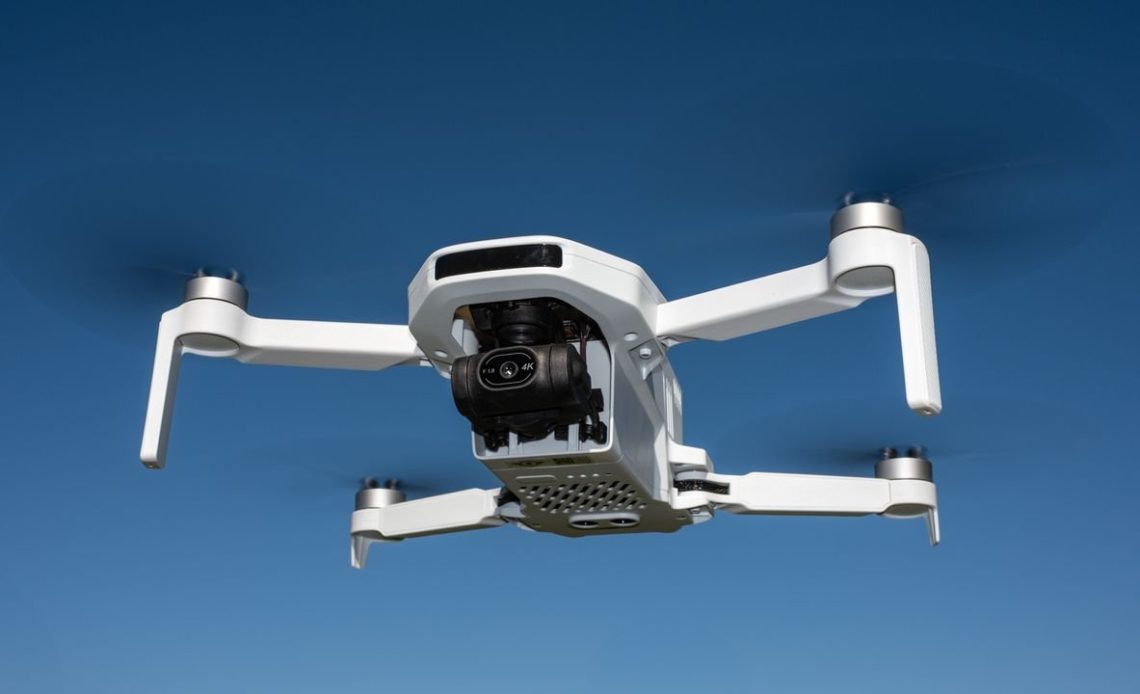
Potensic saw something of a renaissance with the launch of the Potensic Atom SE and then the Potensic Atom, which are both popular sub-250g folding drone models. The company moved away from larger drones to more compact and lightweight folding models and never looked back.
Building on this success and pushing features and functionality further, we now have the Potensic Atom 2, which is also a sub-250 g model and a compelling DJI alternative. The Atom 2 offers a useful range of effective features that help it to be one of the best beginner drones available. These features, alongside image quality, make it suitable for a wide range of pilots, so it’s also arguably one of the best drones.
Drones are mainly used for their cameras, and the Atom 2 is a capable performer in this area, with image quality improvements over its predecessor alongside 4K video capture, RAW and JPEG photos and slow-motion video, to name but a few features.
Flight performance can’t be faulted and the AI-driven subject tracking modes are highly effective, considering the competitive price of the drone. All in all, it’s a drone well worth considering whether you’re a beginner, an enthusiast or even a more advanced pilot. Let’s take a more detailed look at what the Atom 2 has to offer.
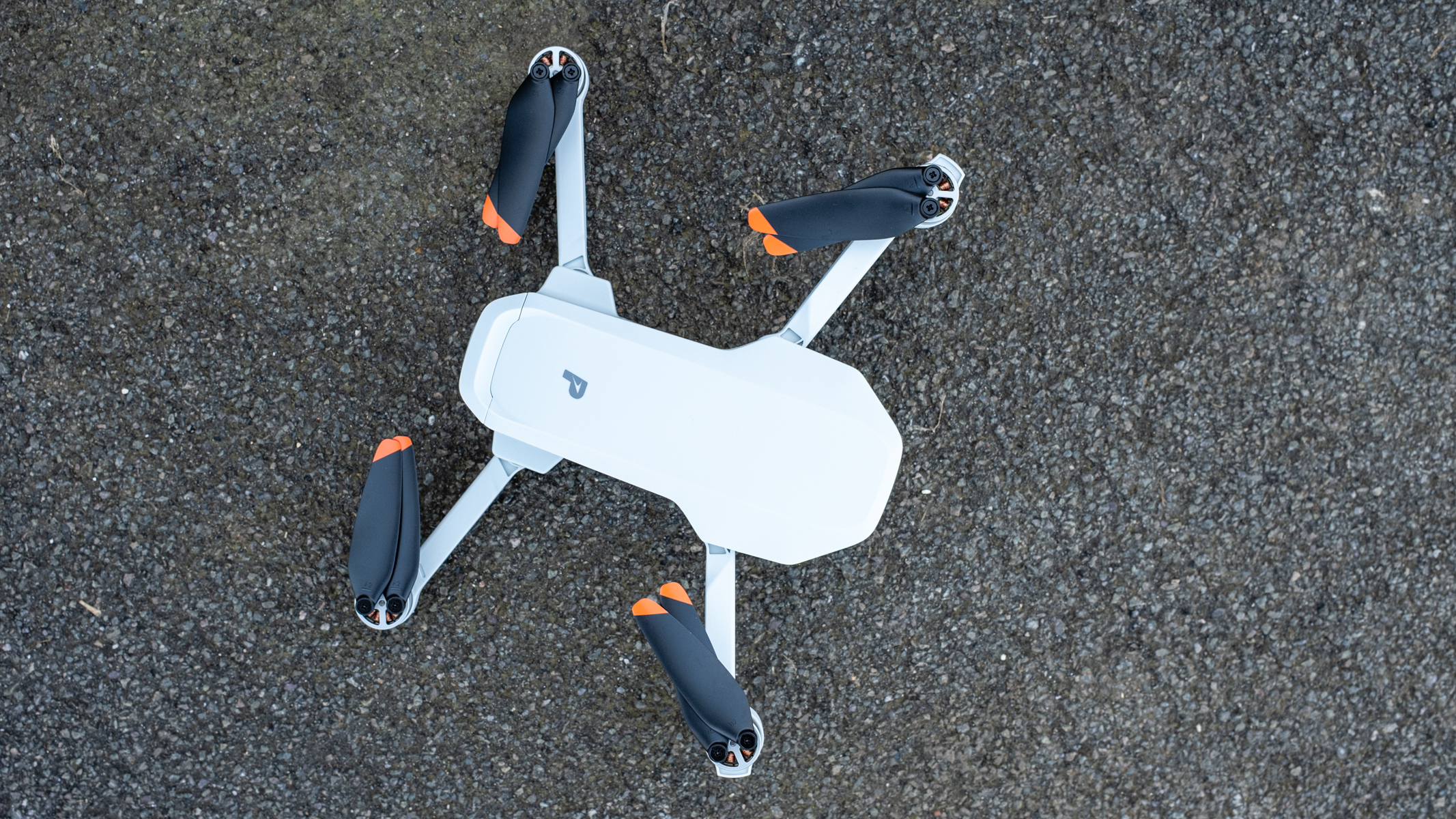
Potensic Atom 2 drone review
Potensic Atom 2 review: Design
- Compact folding design
- Excellent build quality
- Unique controller
The Potensic Atom 2 follows what has become the standard build for sub-250 g drones with its light gray folding design. This takes the drone from 5.63 x 3.46 x 2.28-in / 143 x 88 x 58mm when folded to 8.3 x 5.98 x 2.28-in / 210 x 152 x 58mm unfolded, not including propellers.
The weight comes in at 9 oz / 249 g. Build quality is excellent and the new propellers do seem to be quieter as claimed. You can certainly hear the drone in flight, but the buzz of the propellers appears to be a lower tone.
There’s nothing particularly exciting about the overall design — it’s functional and does exactly what it’s supposed to. There’s a basic downward vision system but no collision avoidance. There’s also a flashing green light on the rear of the drone, which may be bright enough for night flying. This is extremely useful considering the AI Night feature.
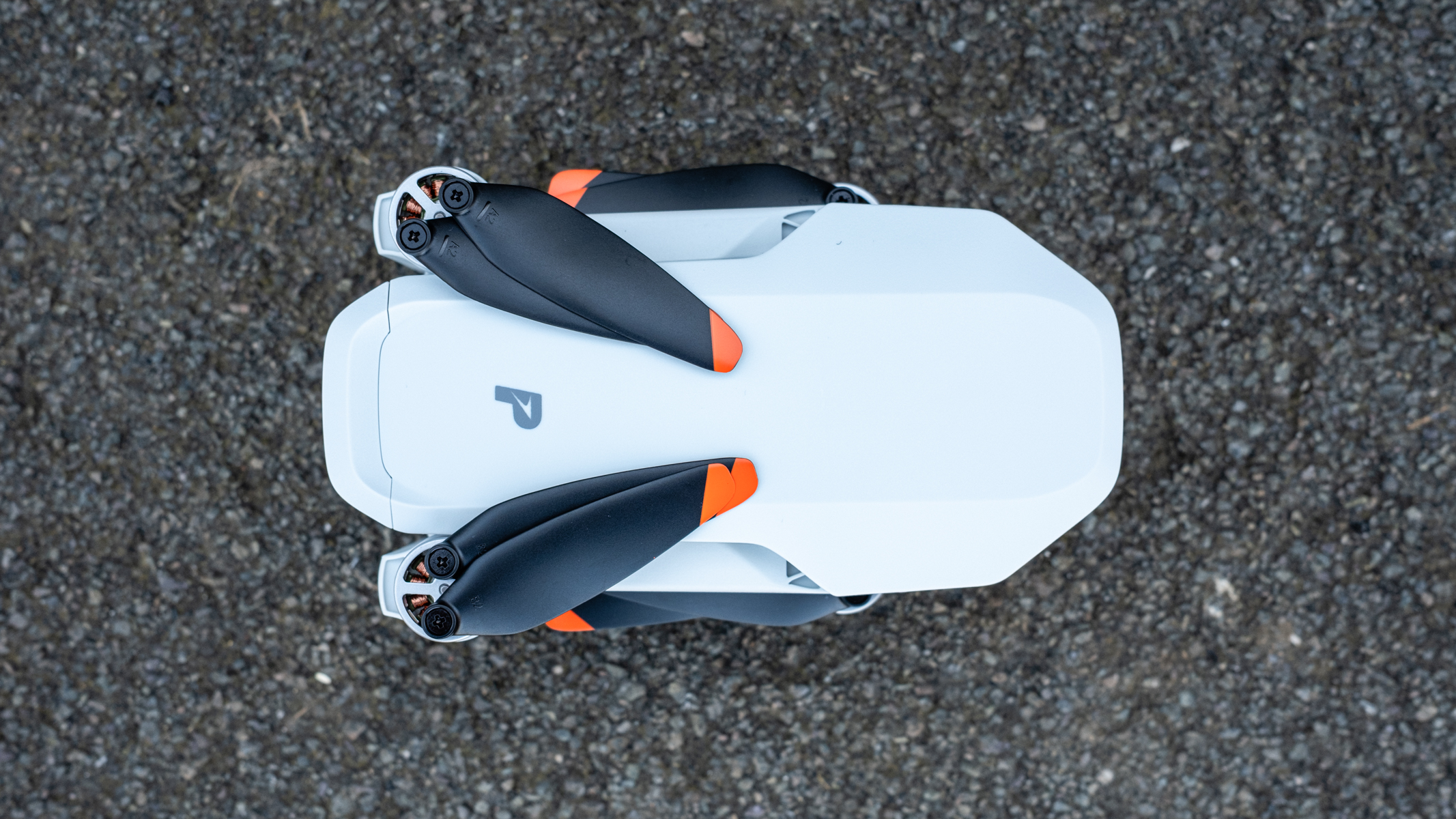
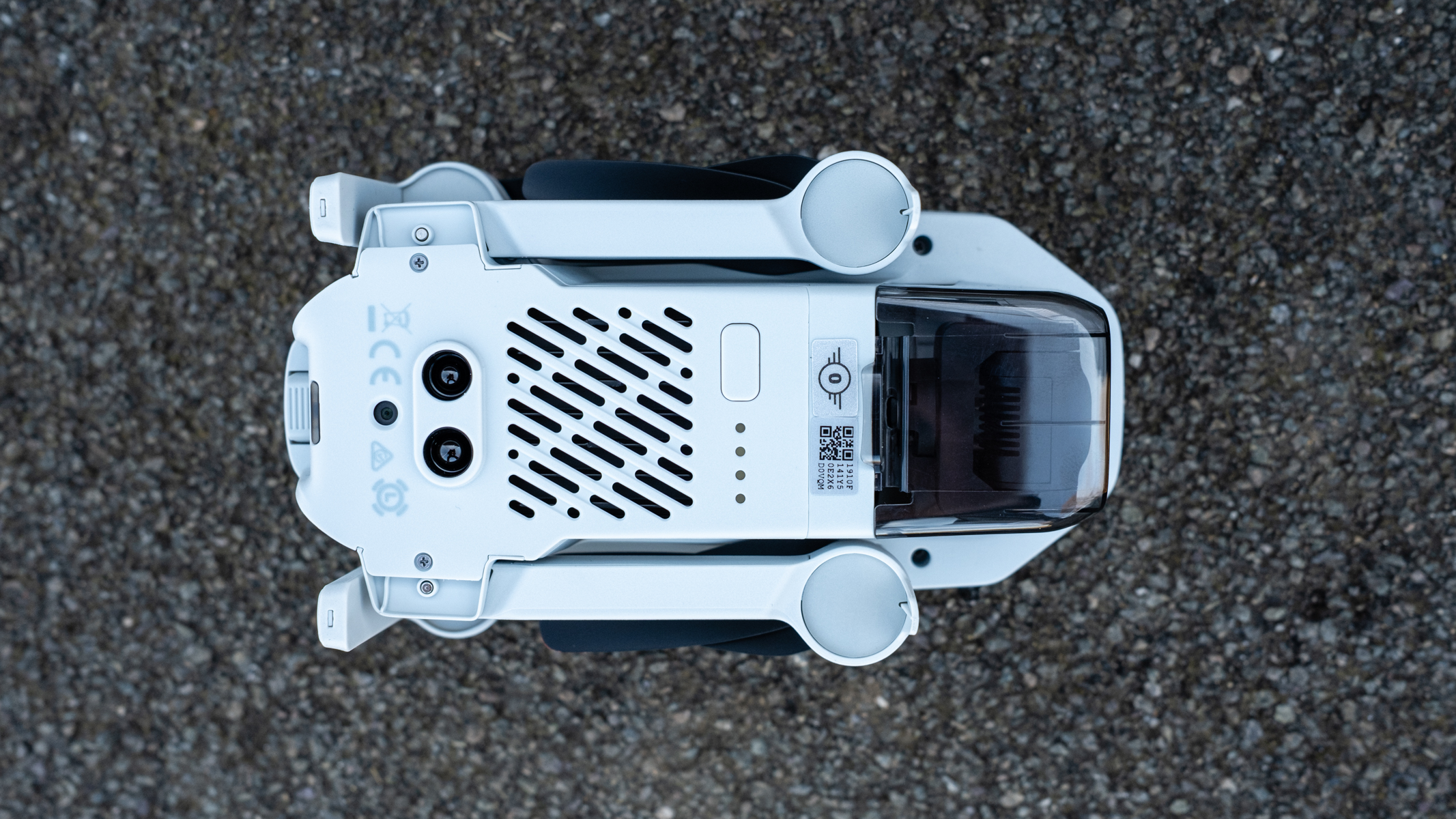
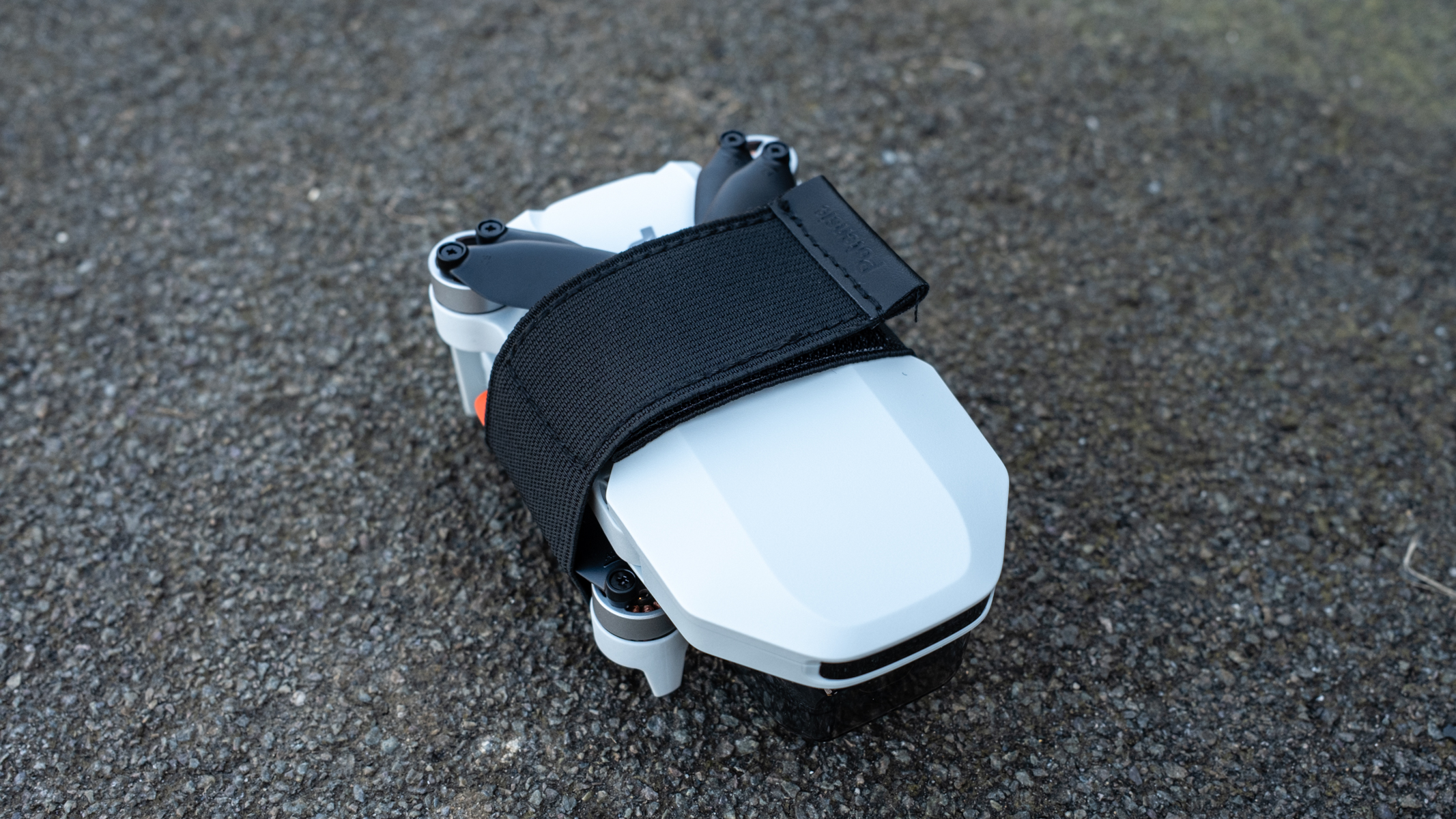
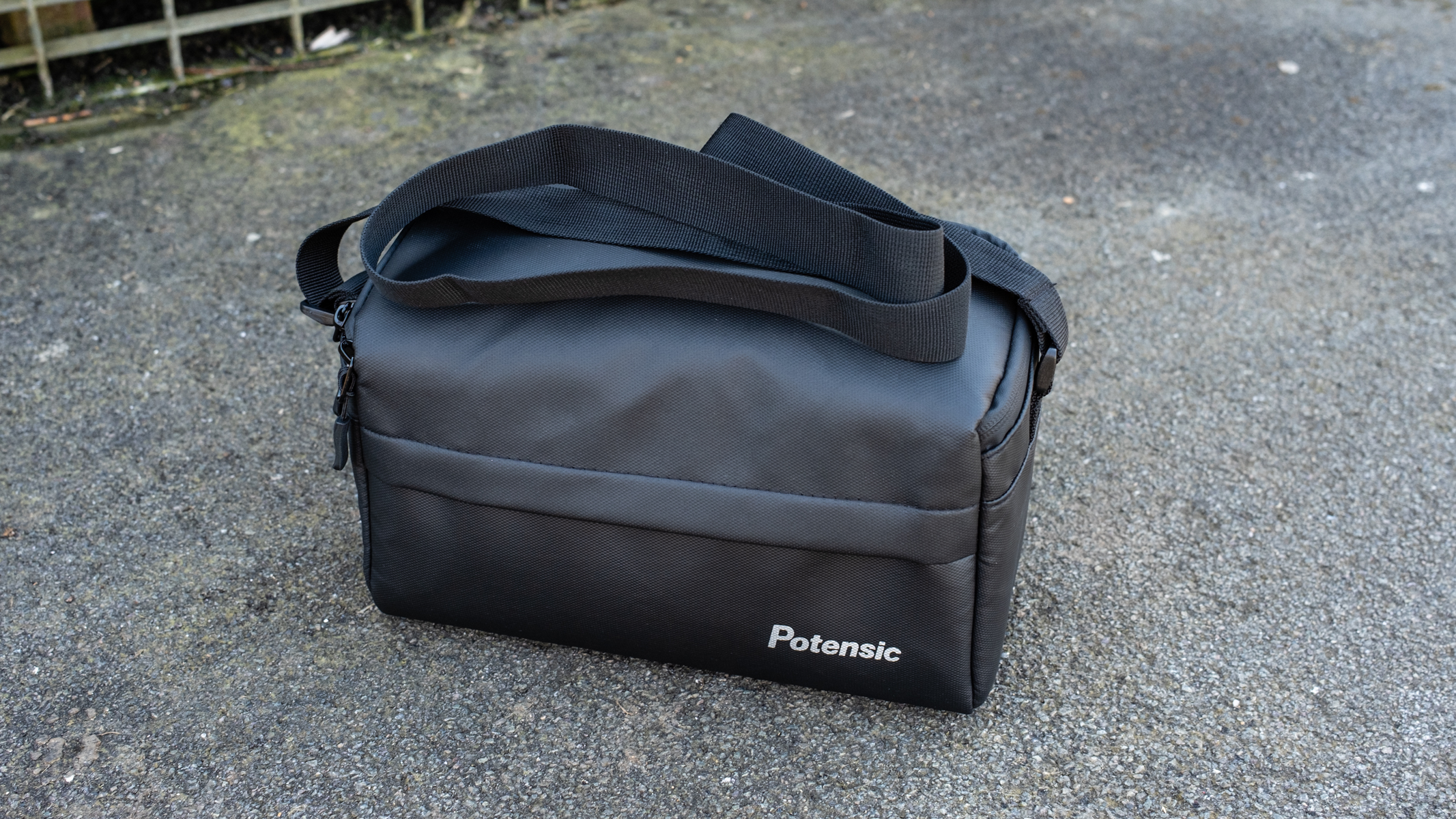
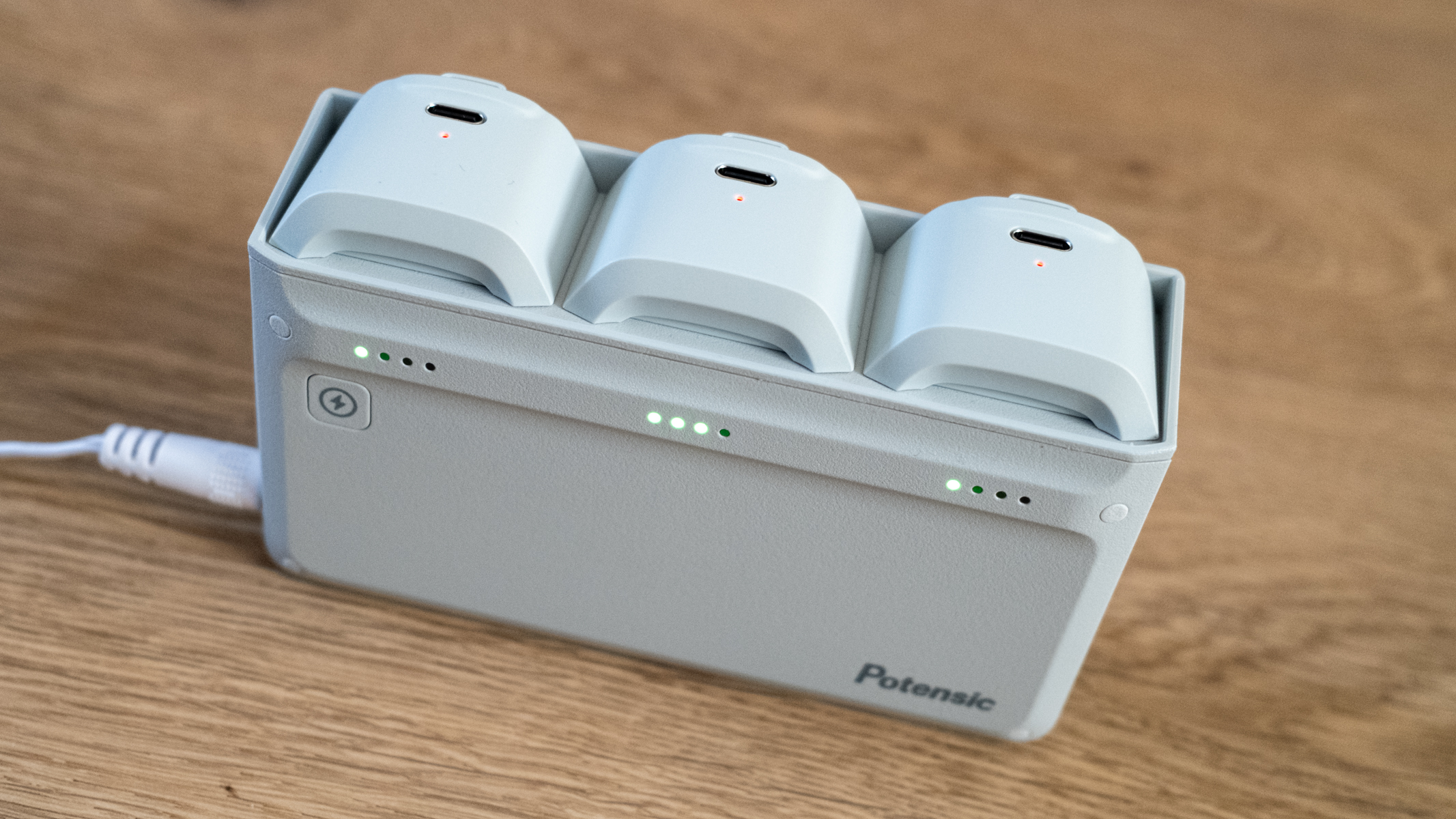
In terms of flight times, the batteries lasted around 22 minutes during testing before Return to Home was suggested by the drone at a 15% battery level. It’s certainly not the advertised 32 minutes, but not bad at all for 2230 mAh capacity batteries.
The fast-charging hub that comes in the Fly More Combo does indeed provide a fast charge of three batteries at once and uses an adaptor for charging rather than USB, which may be the reason.
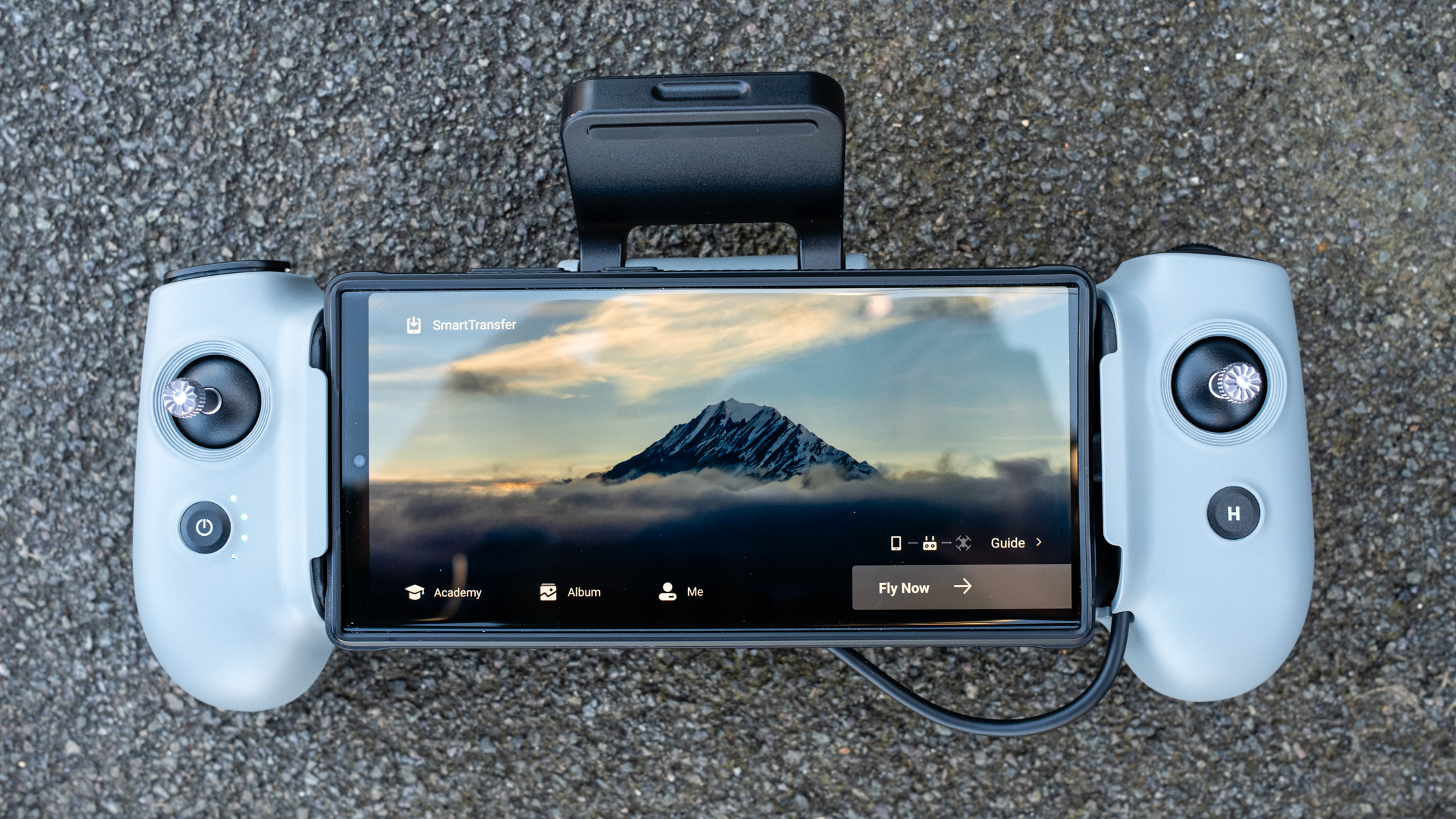
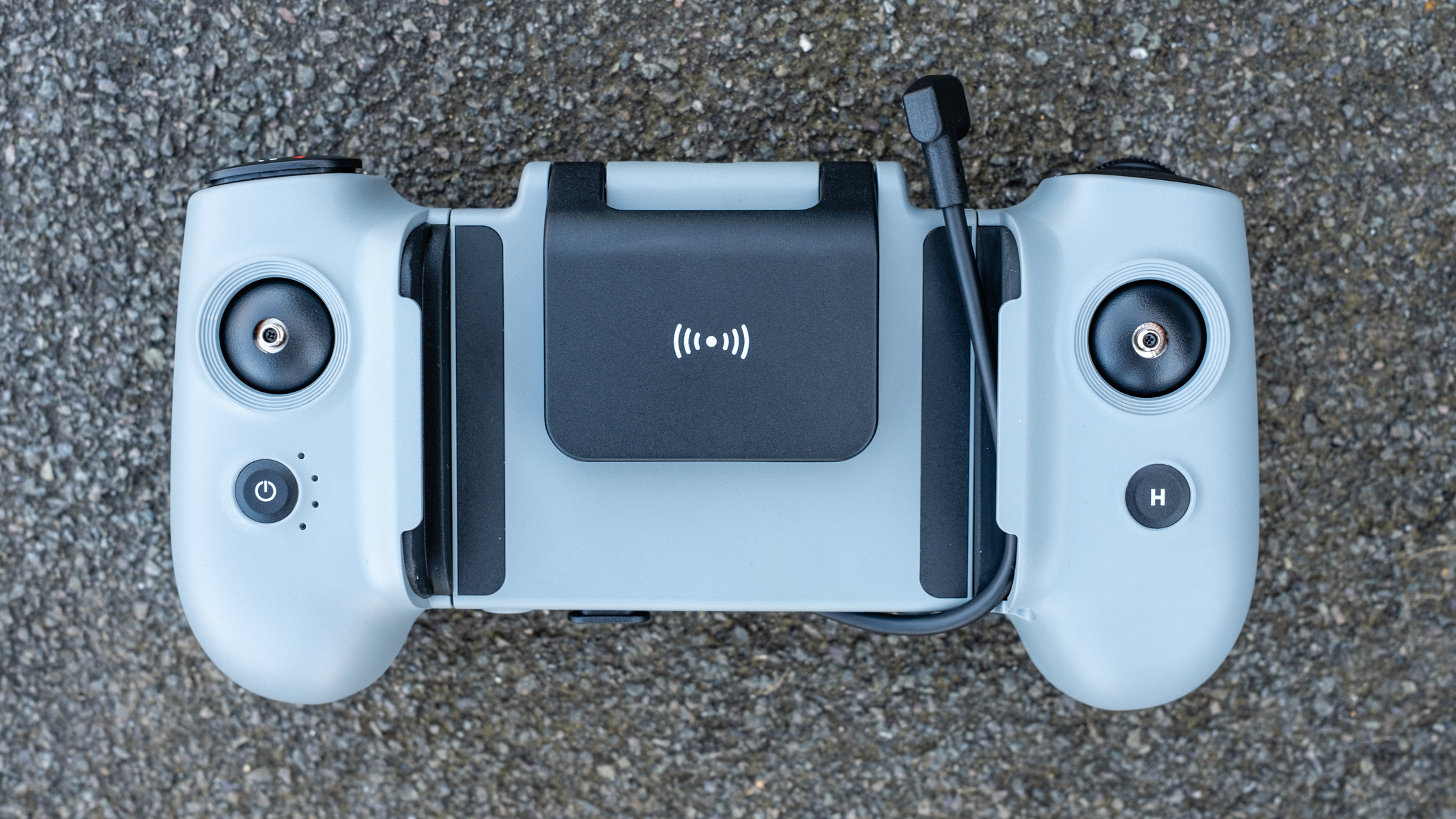
The controller has been upgraded and improved since the Atom and Atom SE but follows the same unique design where your smartphone sits in the centre between the comfortable handgrips. This presents itself more like a smart controller, and the weight distribution is much more comfortable than controllers where phones are top-mounted.
There are six direct access controls for accessing commonly used functions, including the gimbal tilt, which ranges between -90 and +20 degrees, so the camera can look up slightly, and also the digital zoom. Other controls available include switching the gimbal angle from 0 to -90 degrees, flight mode, a shutter button and a Return to Home button. Two buttons are customizable, alongside customizable control stick modes and sensitivity.
There’s also an antenna that needs to be lifted before the phone is attached — the video transmission distance is 6.2 miles. During testing, there was occasionally some pixelation of the video feed, but it was minor and caused no issues. The build quality of the controller, like the drone, is excellent, and the overall design makes it a pleasure to use.
Potensic Atom 2 review: Functionality
- Fast and powerful
- Time-lapse and slow motion video
- AI subject tracking and Quickshots
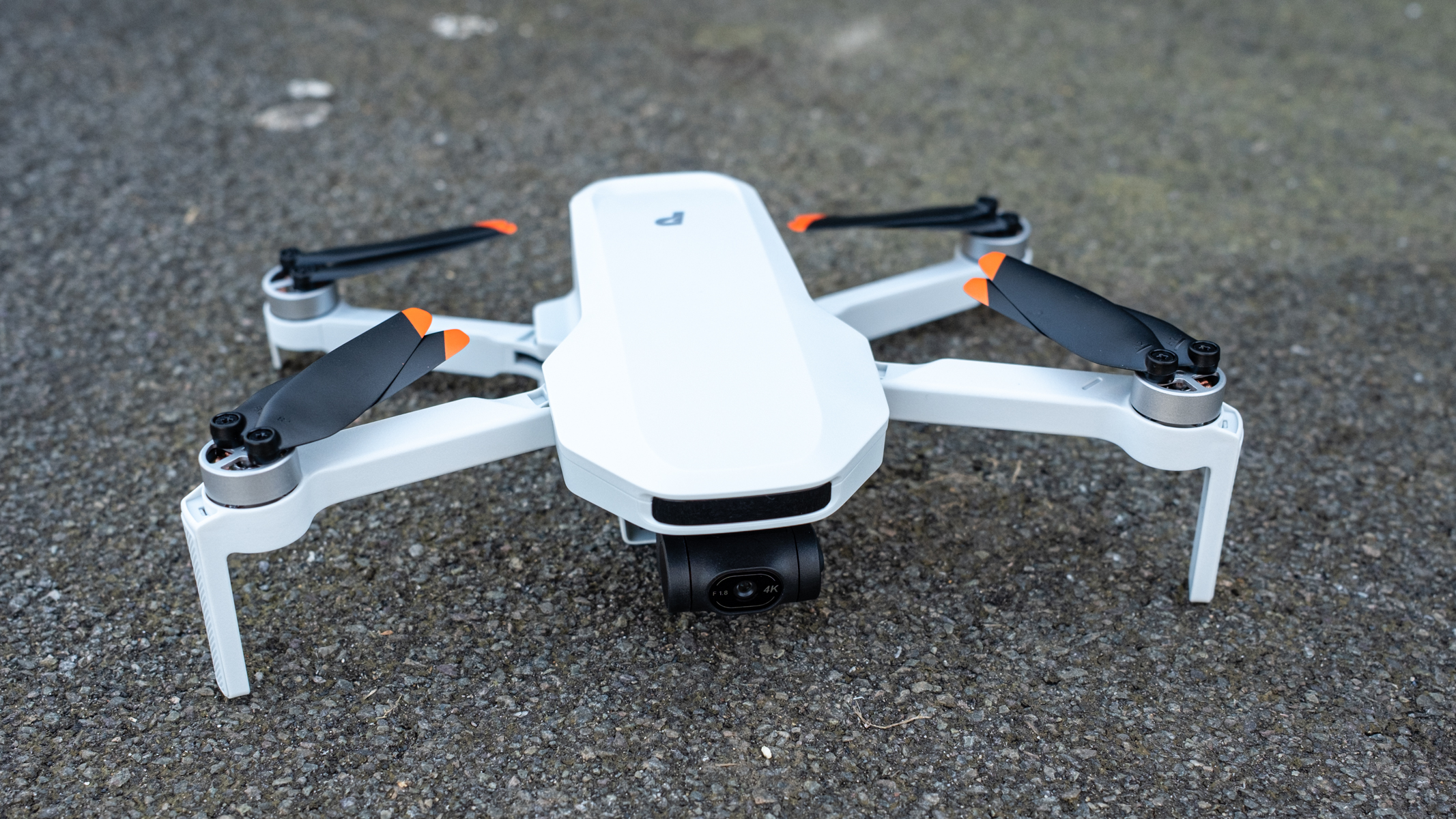
Despite being a fairly inexpensive drone, the Atom 2 comes packed with some impressive and useful features. As previously mentioned, there’s no collision avoidance, but there is Return to Home and the GPS enables a steady hover with no perceptible drift during test flights.
Flight modes include Video, Normal and Sport, with Sport mode offering a top speed of 35.8 mph, which is fast for a drone of this size and weight. Wind resistance is Level 5, which equates to a wind speed of 23.6 mph and is fantastic because it means you can safely and confidently fly in a wider range of conditions.
The controls and flight performance are excellent, making it possible to perform smooth maneuvers when capturing video. The gimbal tilt is also smooth, so there’s a lot of potential available when capturing video. US-based pilots will be happy to know that the Atom 2 includes a built-in Remote ID to remain in line with FAA requirements.
Many pilots prefer manual flight, but if you like to use automated flight patterns, there are AI Quickshots which include Pull-Away, Spiral, Rocket, Circle, Boomerang and Dolly Zoom. All of these perform well and Dolly Zoom produces a good result that utilizes the digital zoom, alongside flying backwards, to create the effect. Quickshots can be applied to a human subject or object by drawing around the desired subject on the phone screen using the Potensic Eve app.
Within the same on-screen controls for Quickshots are also AI Track options for subject tracking, which include AI Spotlight, AI Follow and AI Parallel. Again, these all work well and make tracking static and moving subjects while capturing video incredibly easy.
Other features pilots will find useful are the Interval Timer for time-lapse capture and Cruise Control. The latter keeps the drone locked, flying at a set speed and direction without having to push the control sticks once initiated.
Another useful feature is Dynamic Home Point, which returns the drone to the controller location rather than the take-off point when Return to Home is initiated. This means that you can walk around while flying, if necessary, safe in the knowledge that the Atom 2 will return to your current location rather than the take-off point.
Potensic Atom 2 review: Performance
- Fixed focus 26mm f/1.8 lens
- 4K and slow-motion video
- Photos in RAW and JPEG
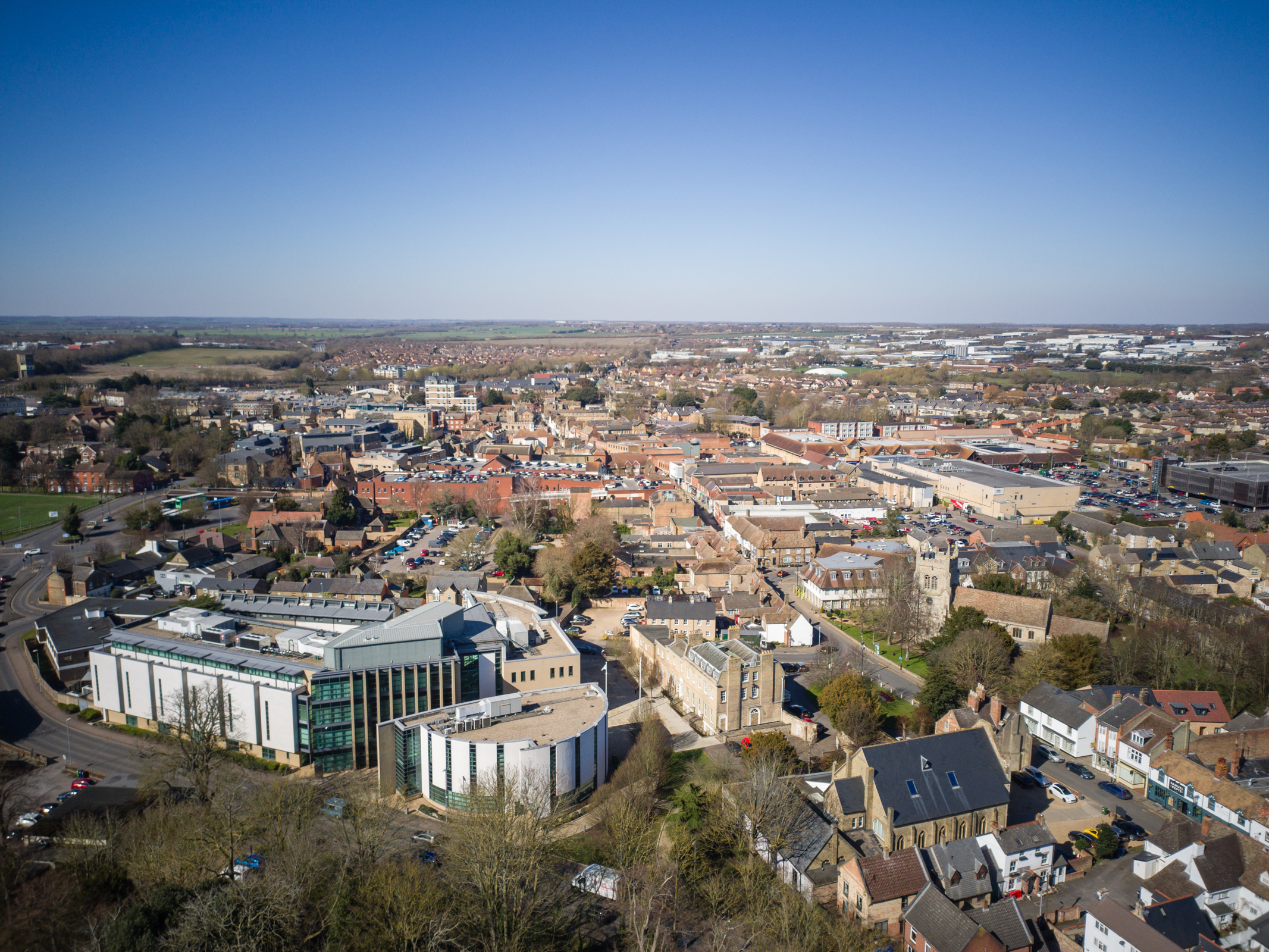
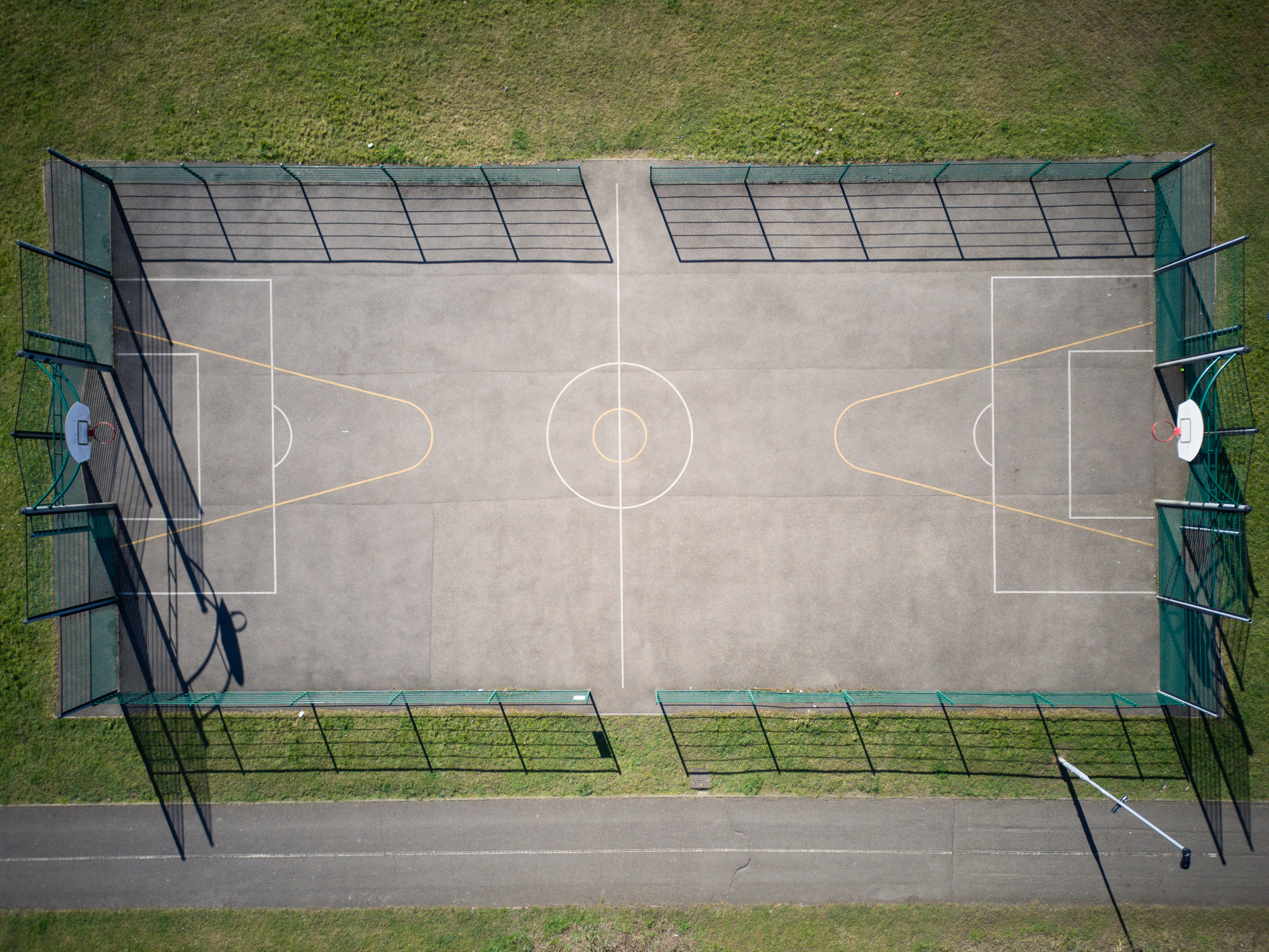
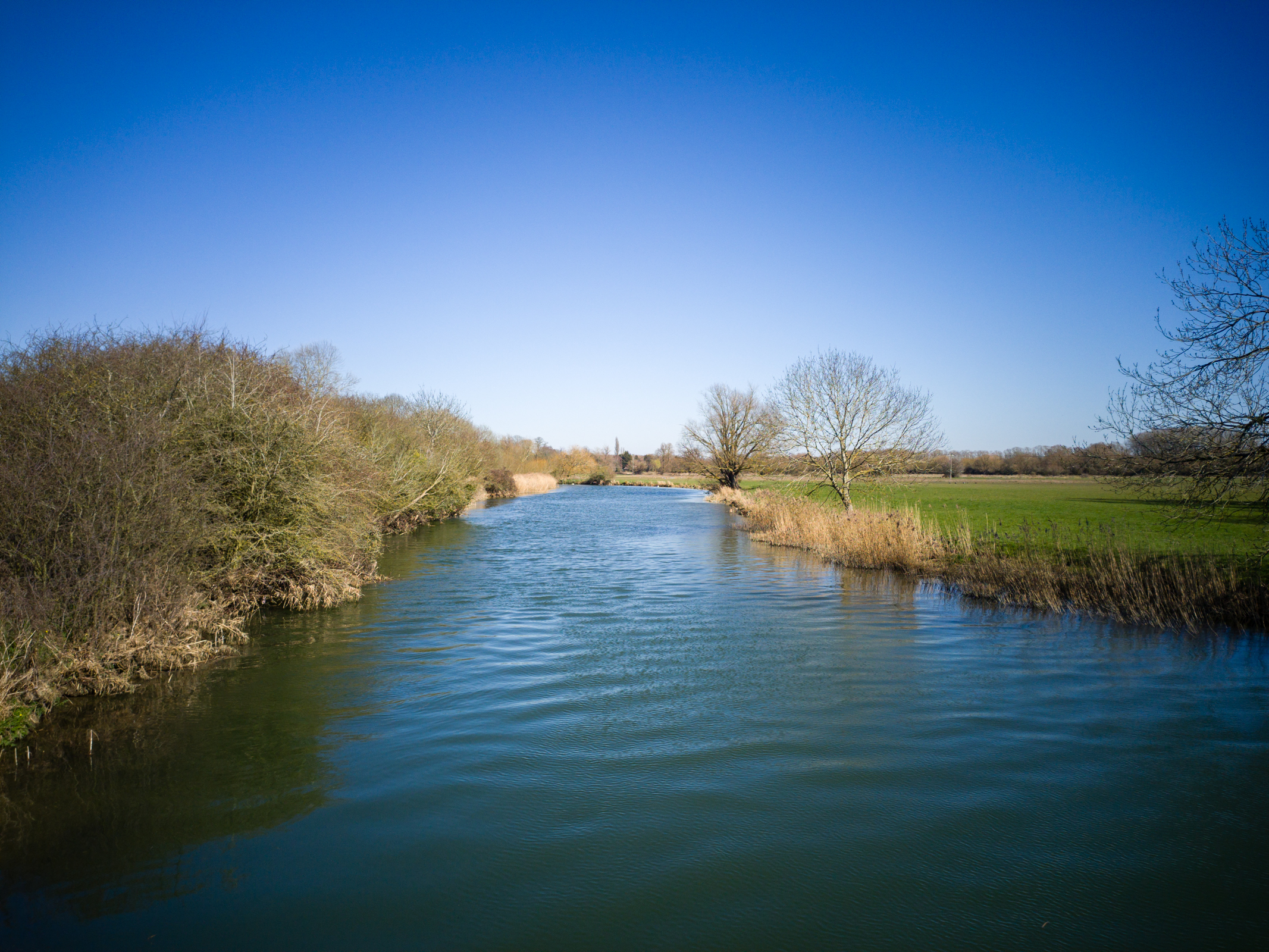
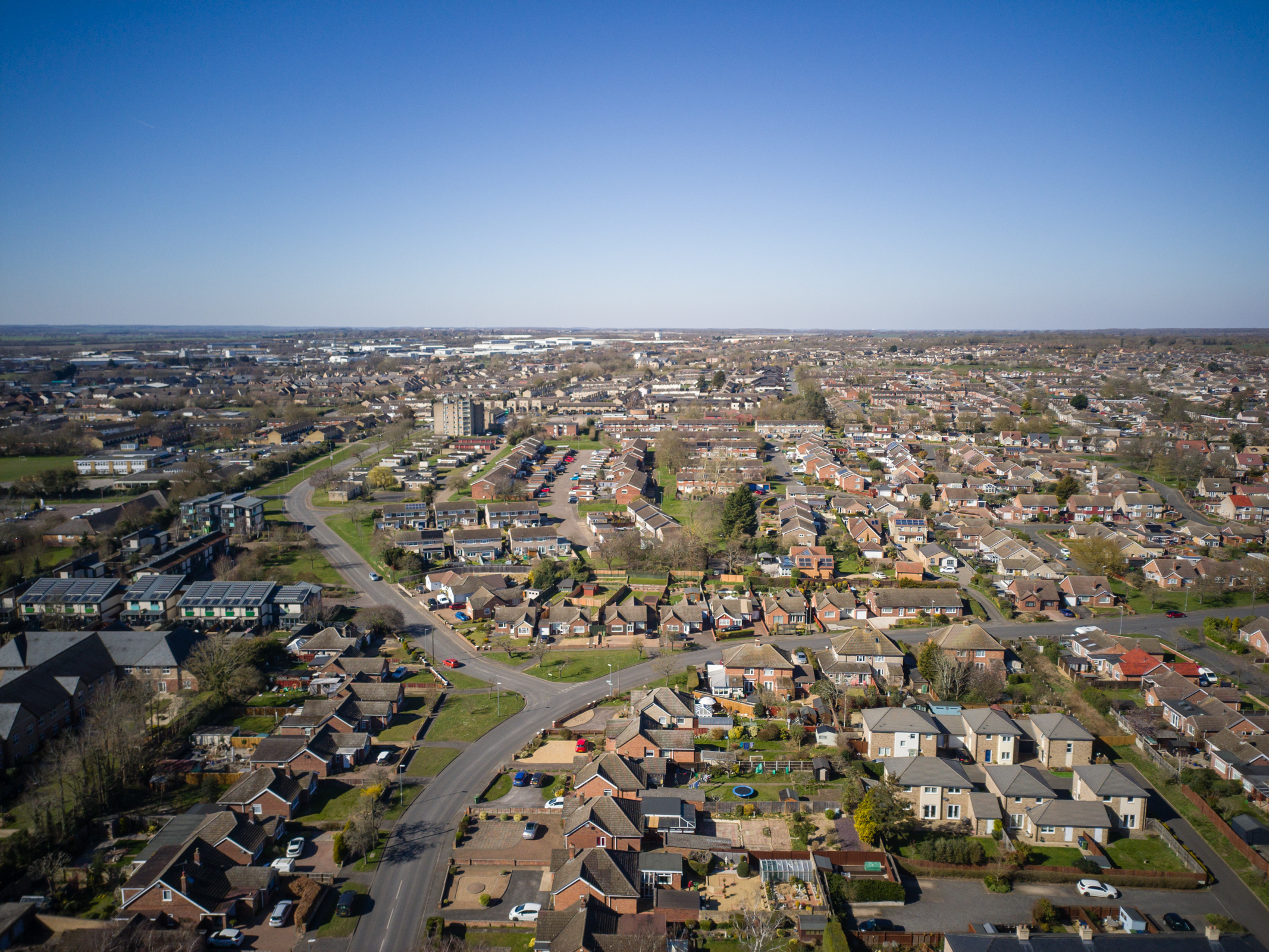
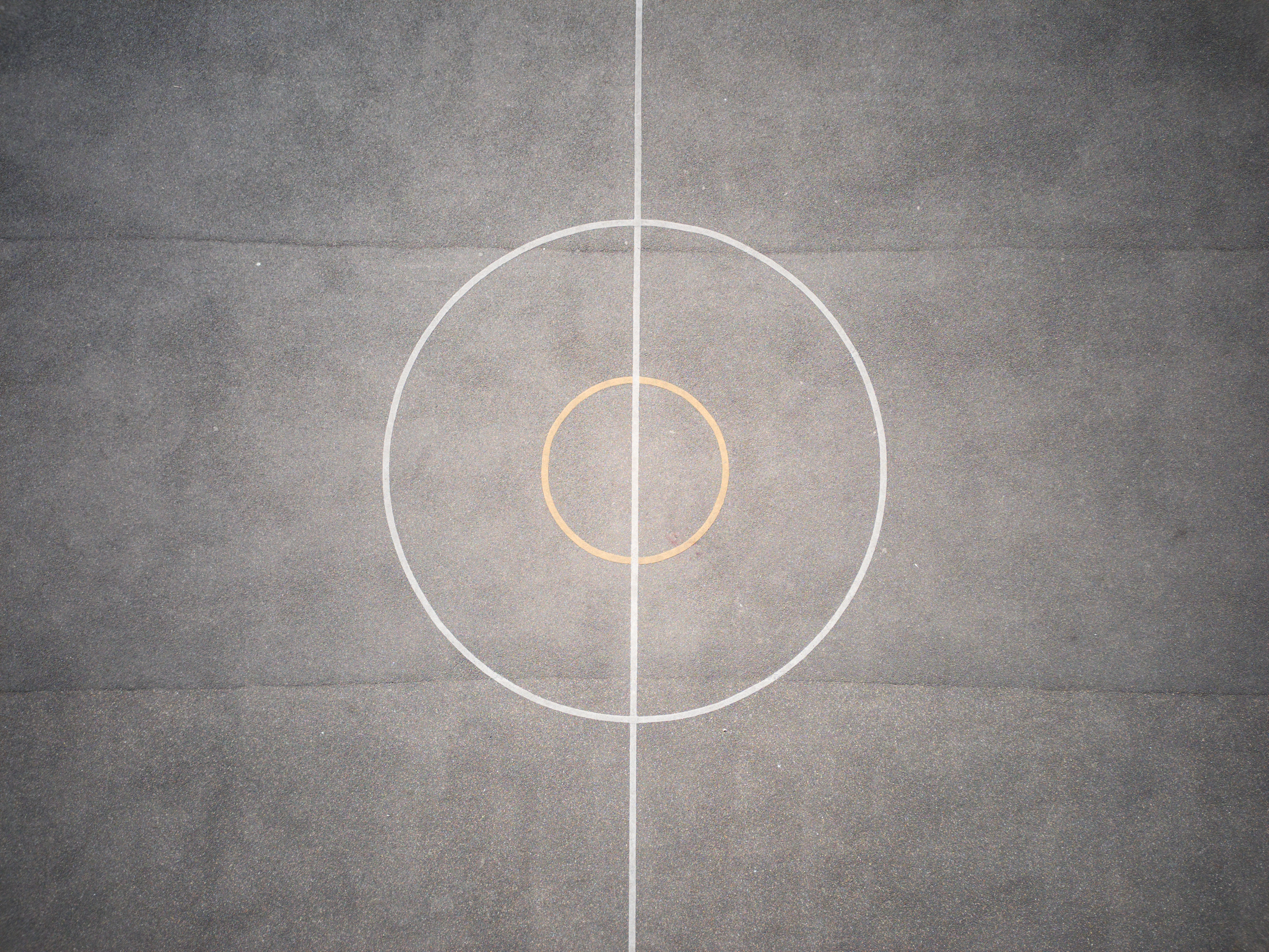
The drone features a 12/48MP Sony 1/2 in CMOS sensor with 4-in-1 pixels, which is claimed to reduce noise and enhance low-light performance. There’s also the ability to switch between 12MP and 48MP photo capture. The caveat of the 48MP/8K photo capture is that it’s only available in JPEG format and not in RAW.
Hopefully, this will be rectified in a future firmware update when other functionality, including log video and an additional panorama, is added. Camera control is available in Auto and Manual, which is great. However, there’s no histogram to aid with exposure, which would also be great to see in a firmware update.
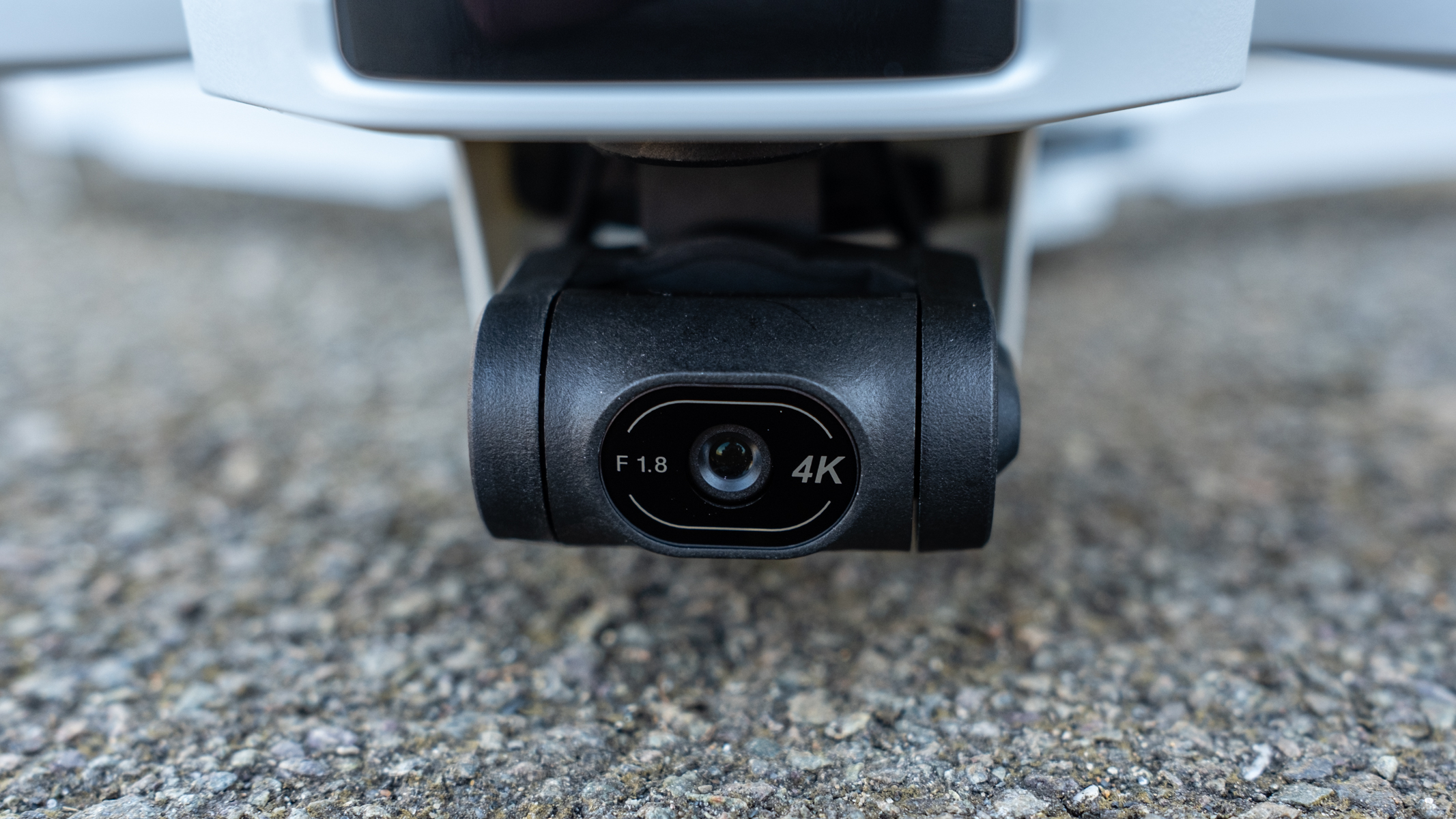
The camera provides a 26 mm equivalent focal length with fixed focus from 4 m to infinity, while the aperture is fixed at f/1.8. Sharpness is best in the centre of the frame when shooting photos, with a fall-off in sharpness towards the edges, which is typical of most consumer drones. There’s also a noticeable vignette in photos and white balance can be inconsistent, but it can be easily fixed when shooting RAW.
JPEG processing is on the heavy side and sharpening is strong, so capturing photos in Raw is the best option. Vertical shooting is also available at 1520 x 2704 pixels, which is a 9:16 ratio for social media, and these shots are captured in JPEG only. Video quality is much more consistent, with none of the aforementioned issues. Most consumer drones produce better video quality than photo quality.
Video can be captured at 4K 24/25/30FPS, 2.7K 24/25/30FPS, FHD 24/25/30FPS and Slow motion FHD at 2/3/4/5x with a maximum bitrate of 80 Mbps. There is a Defog mode for shooting in hazy conditions and an AI Night mode for capturing video at night. The latter reveals more shadow detail but image quality in these lightened areas isn’t great.
Video color modes currently include Normal and HDR, but the Atom 2 will be capable of capturing flat log footage, P-Log, with a future firmware update. Log footage is a flat color profile that captures a greater dynamic range than standard profiles. It must be color graded/processed and it allows for more advanced and professional video capture.
A digital zoom is available at 4K up to 2x, 2.7K up to 3x and FHD up to 4x. Photos can be zoomed in up to 2x. Image quality naturally reduces but the feature can be useful for capturing distant subjects or maintaining a safer shooting distance. The digital zoom also allows for Dolly Zoom. Additional photo features include Bracketing of 3/5 frames and Burst Shooting of up to 7 frames.
Panorama capture is available with Wide Angle, 180-degree and Vertical. Sphere will be delivered in a future firmware update. Panoramas are stitched in-camera and saved as JPEGs alongside the constituent images. If you’d like to capture panoramas in RAW, you’ll have to capture them manually.
Potensic Atom 2 review: Cost
The Potensic Atom 2 is available in two kits, with the Fly More Combo offering the best value for money because of the additional accessories on offer for not a lot more money. The Atom 2 Standard Kit includes the drone, controller, one battery, two sets of spare propellers, phone cables and other accessories for $330 / £300.
The Atom 2 Fly More Combo includes all of the above plus two additional batteries, a fast-charging hub, a shoulder bag and another two sets of spare propellers for $430 / £400. For the extra $100 / £100, this option makes sense because of the useful additional accessories alongside longer flight times thanks to the extra batteries.
The charging hub and two batteries bought as an additional set are more expensive than the additional cost of the Fly More Combo.
Should you buy the Potensic Atom 2?
The Potensic Atom 2 offers a similar level of performance, features, functionality and image quality as mid-range sub-250 g drones such as the DJI Mini 3. In some areas, the Atom 2 even exceeds these drones.
Once the P-Log color profile is delivered in a firmware update, the drone will occupy an interesting space between the mid-range and professional-level drones within the category.
For the price, the Atom 2 is a highly attractive drone that will suit the needs of many pilots, from beginners to advanced enthusiasts. It could be used professionally, but there are more advanced sub-250 g models available that may better suit the needs of professional pilots.
If the Potensic Atom 2 isn’t for you
The DJI Mini 4 Pro is the most advanced sub-250 g drone available, which, alongside producing excellent image quality in photos and videos, also offers advanced collision avoidance.
The Potensic Atom may be the older model but it’s still available to buy and, with the launch of the Atom 2, the original Atom is available for a lower price if you’re on a budget.
The DJI Mini 4K is an inexpensive drone capable of capturing 4K video and the image quality is impressive considering the price of the drone. The features are basic, but it flies well.
Author: James Abbott
Source: Space.com
Reviewed By: Editorial Team



